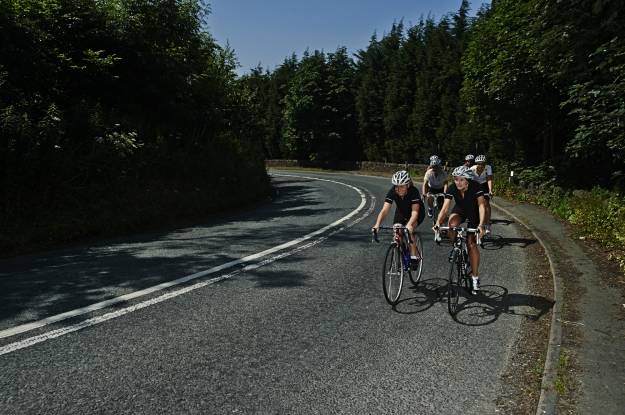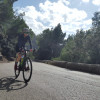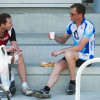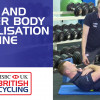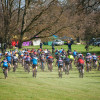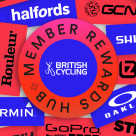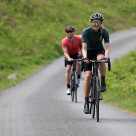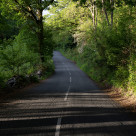Knowledge Level: Intermediate
On any ride, unexpected bad weather, poor pacing, getting your nutrition wrong, fatigue or an underlying virus can all conspire to make the experience a misery rather than a pleasure. If this happens, what can you do?
Prevention is better than cure
If you have trained suitably, ideally by following one of the British Cycling Training Plans, paced to your ability, eaten and hydrated well, recovered from your last ride and worn suitable clothing, you should be able to avoid having a bad day. However, even if you’ve ticked all these boxes and avoided some of the other classic mistakes, you can still sometimes find yourself grinding to a halt.
Call it a day
If soldiering on could put yourself or other riders at risk, consider cutting your losses and shortening your ride. If you are out on a training ride, your essential kit should include a phone, money, credit card and, if you are in an unfamiliar location, a map. Is there a shorter route home? Is there anyone who could come and collect you? Is there a town or village nearby where you could find shelter and maybe organise a taxi?
If you are taking part in an event, there could be a broom wagon or you may be able to abandon at the next feed station. If you decide to drop out, shorten the ride or don’t officially finish, it is essential to let the event organisers know as they have to account for every rider who started out.
Following mottos such as “no pain, no gain” are not training smart. If you can’t achieve the goals of the training session, ask yourself why. Were the demands of the workout correct? Maybe you need to re-test your threshold for your training zones, especially if you have had a lay off from training. Were you adequately recovered for the session? Carrying on through a sub-par session will only increase fatigue and will not really achieve any worthwhile gains.
Eat
If you are starting to struggle on a ride, the first action to take is to eat. Take on something sugary and easy to digest, such as a gel or sweets. You will often find that this will give you enough of a boost to carry on but it is essential then to carry on eating little and often for the rest of the ride to avoid slumping again. If you find you are regularly running out of fuel on rides, re-examine your nutritional strategy. Many riders forget to eat, leaving it until they are hungry which is too late. If this sounds like you, set an alarm on your watch or bike computer to remind you to eat every 20-30 minutes right from the start of the ride.
Back it off
Almost all bad days on the bike can be explained by poor nutrition, over ambitious pacing or a combination of the two as they are intrinsically linked. If you have been fuelling well but are still starting to struggle, it is likely that you are simply riding too hard. Stick to the pacing strategies that you have used successfully in training and, to give yourself the best chance of recovering and salvaging your ride, drop to heart rate or power zones 1-2 until you feel that you are starting to recover. Incidentally cramp, another potential cause of a tough time on the bike, is more likely caused by riding too hard, than by electrolyte or fluid imbalances.
Layer up
If you are starting to feel really cold and beginning to shiver, your body is wasting valuable energy, simply trying to keep you warm. Becoming cold and running out of energy is a vicious circle. You haven’t got the energy to push harder and get warm, so you become colder, end up riding even slower and cool down more. Break the circle by eating, and by putting on an extra layer. This is why, even on warm days, always carrying a light windproof gilet is a good idea, especially on rides into mountainous terrain with long descents. This may seem obvious but it’s amazing how many riders won’t pause to put a jacket on. If you have totally misjudged the conditions and haven’t got suitable clothing, you are probably better cutting the ride short.
Cool down
If it is a really hot day, overheating, heat exhaustion and even heat stroke are the issues you may have to deal with. If you are starting to overheat, finding some shade, stopping and taking on cool fluids is the best course of action. Once you have cooled down, adjust your pacing to avoid overheating again and ensure that you are optimally hydrating. If there is no shade, slow right down, prioritise drinking, and maybe shorten your ride.
Take a break
An extended break in a café or at a feed station can save a ride. Often pushing too hard will shut your digestive system down, resulting in a bloated sensation and your body not being able to process the food you are taking in. A decent break can act as a digestive reset. Aim to eat and have a drink as soon as you stop and then give yourself at least 30 minutes. This will allow your digestive system time to process what you have in your stomach, without the stress of riding, add some fuel for further down the road and will give your blood sugar a chance to rise. Make sure you stay warm, or get warm, and, if you have any spare layers, put them on and try to dry off any wet kit. To avoid stiffening up, try to stand and stretch your legs every 5 minutes and ensure, once you set off again, you ride at a conservative pace and keep fuelling.
Get in a group
Finding a group to ride in and getting some shelter from the wind can make all the difference to getting through a tough patch. Possessing good group riding skills and being relaxed in a bunch of riders can allow you to significantly drop your riding intensity, give you a chance to recover and allow you to take on some food and drink. Similarly, if you find yourself in a group of riders that are pushing too hard for you, don’t make the mistake of trying to hang on in there. Let them go, ride at your own pace and, chances are in most events, a slower group will soon appear that you can join.
If you are out on a training ride where the group has agreed to stay together, don’t be afraid to ask your riding companions to slow it down a bit. Do this before gaps form, and you find yourself off the back of the group.
Mental games
Cycling can be tough, that is one of the reasons we love it, and sometimes you just have to dig in and push on. If it is your main target event, think about the training hours you have put in and how good it will feel crossing that finishing line. Break up the rest of the ride into manageable chunks. Make the next feed station, the top of the next climb, or even the next bend in the road your goal. Reach that target and then set another. Every cyclist, and even top professionals, will have done exactly the same thing at some stage in their cycling careers, so you can take solace that you are in good company.




